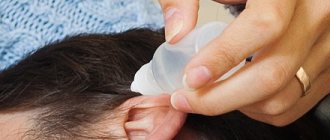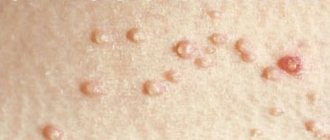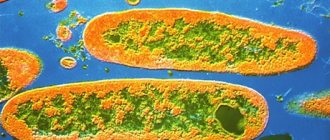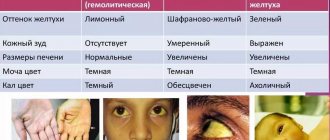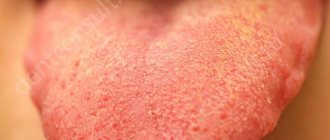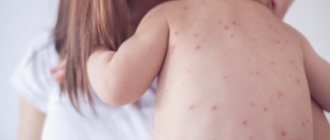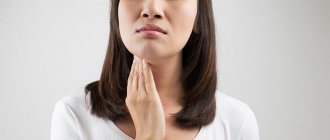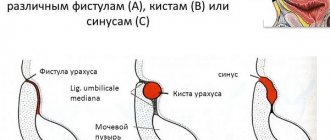Causes of body rash: symptoms of infectious diseases
Very often, red rashes on the body are caused by a reaction to external irritants. But along with a deterioration in well-being, a skin reaction becomes a sure sign of problems within the body. This means that before looking for a cure for the rash, it is necessary to determine the cause of the disease.
Measles
The disease is caused by the measles virus, which is transmitted from a sick person to a healthy person through airborne droplets. The disease usually affects children. The onset of measles is characterized by lethargy, headaches, cough, fever (up to 39 degrees), runny nose, pain in the eyes and photophobia.
On the 3-4th day, pinkish-white uneven spots on the roof of the mouth and a red rash on the skin appear. The rashes are usually very small, red, and form large spots. Initially, they are localized on the patient’s face, his neck, in the area behind the ears, but later they move to the rest of the body.
Treatment of measles is based on taking antihistamines, drinking plenty of fluids, and bed rest.
Rubella
Rubella is a viral disease that mainly affects children, but cases of infection also occur in adults. Rubella is especially dangerous for pregnant women: in this case, there is a high probability of infection of the fetus, which can lead to congenital malformations of the child.
Rubella appears as a small rash on the body and sometimes on the face. In addition, irritation can affect the mucous membranes. The rash usually does not cause itching, and after it disappears there is usually no peeling, scarring or other marks. A characteristic increase in temperature to 37-37.5 degrees and enlarged lymph nodes only confirm the presence of rubella.
Chickenpox
Chicken pox, or chickenpox as it is popularly called, belongs to the category of acute viral diseases. Infection occurs through airborne droplets when communicating with a sick person.
With chicken pox, a pinkish spot first appears, which after a few hours turns into a small bubble. Then the bubble bursts, and the opened wound becomes covered with a crust. Among other things, such an itchy rash provokes scratching and further irritation.
Scratching the rash on the skin with chickenpox is strictly prohibited. The fact is that the rashes affect the upper layers of the skin, so after the papules dry out, most often there are no traces left on their skin. If you scratch the papule, damage to the germ layer of the epidermis will occur, which leads to scarring.
Treatment of chickenpox consists of taking antiviral drugs (for moderate and severe forms), antihistamines, as well as local treatment of the rash with brilliant green or fucorcin. If the patient has a fever, he is given antipyretic drugs (if the patient is a child, taking aspirin is prohibited).
Herpes
A viral disease that manifests itself in the form of blistering rashes on the skin, mucous membranes and genitals. Almost all people have the herpes virus in a dormant state: about 90% of the world's population is infected with this virus. The impetus for its activation is usually hypothermia, stressful situations, lack of sleep, unbalanced nutrition, injuries, overwork, viral diseases and a general decrease in the level of the body's defenses. In this case, the herpes virus “wakes up.”
A skin rash with herpes is represented by one or more adjacent vesicular chambers filled with a cloudy, light-colored liquid. Along the edges of the bubbles there is a reddened area of skin with dried crusts. The areas of herpes rashes hurt and itch, body temperature may rise (especially if the rash is localized).
Rash on the body of a newborn
Postpartum rashes (neonatal)
Postpartum neonatal rashes
Newborn babies may suddenly develop acne. This occurs at 1-3 weeks of a child’s life.
It is not contagious, and the symptoms disappear after a few months.
The reason for the popping up of the rash is associated with the influence of maternal hormones during gestation. This is not at all dangerous, and acne disappears on its own after a while.
Erythema toxicum
Erythema toxicum
Symptoms:
- Red spots form on the baby's body;
- The middle of the spots becomes covered with tubercles;
- Does not apply to palms and soles;
- The child is worried due to itching.
Newborn acne
Newborn acne
Forms red pimples filled with pus. There is no itching, nothing bothers the child.
Under no circumstances should you squeeze pimples. The infection may spread and later leave marks on the face.
Shingles
This skin disease is characterized by the appearance of primary symptoms reminiscent of the onset of a flu-like state: body aches, headache, chills, and a slight increase in body temperature. A few days later, a more serious increase in temperature occurs - usually up to 38-39 degrees. Around the same time, characteristic rashes appear on the patient’s skin - reddish-pink spots, which then transform into small-diameter bubbles with a cavity filled with clear liquid. Skin rashes are painful to the touch, the patient feels burning and itching. The rash is usually limited to the face and chest area, but in some cases the disease also affects the arms or legs.
The course of shingles resembles the course of chickenpox: the rash dries out over time, and in its place crusts appear on the skin, which are very itchy and itchy. This similarity is due to the cause of both diseases: both chickenpox and shingles are caused by the same herpes zoster virus.
Treatment of skin rashes due to herpes zoster is carried out using antihistamines, analgesics and antivirals. Local therapy is also prescribed: it is recommended to treat skin rashes with an antiseptic (zelenka, fucorcin) - this helps prevent the possibility of infection getting inside the vesicle and further suppuration. Vaccination is currently used to prevent relapses.
Rash on the body caused by insect bites
After a mosquito bite, the affected area turns red and may feel itchy.
Symptoms vary depending on the type of insect. Some of them (bees, ants, etc.) can even cause a severe allergic reaction.
A rash in the form of bites may be accompanied by:
- burning;
- itching;
- swelling;
- increased temperature at the site of the bite;
- peeling (after exposure to fleas, bedbugs, etc.).
Methods of prevention and treatment:
- Take precautions when visiting places where insects accumulate (forests, swampy areas);
- Wear clothing that is as closed as possible where there is a risk of being bitten;
- Use special products to repel disease provocateurs (for premises and skin);
- Use antihistamines if you suspect an allergy (fever and swelling do not subside after 2-3 days, breathing problems, weakness);
- Use antiseptics to treat the affected area (even a baking soda solution will do).
Pyoderma
The disease is caused by staphylococci and streptococci. These pyogenic bacteria penetrate deep into the skin due to a violation of its integrity, the action of temperature factors, as well as malfunctions of the circulatory system, central nervous system, gastrointestinal tract and metabolic processes. Long-term therapy with corticosteroid and cytostatic drugs can also provoke the onset of the disease.
Typically, pyoderma affects hair follicles, sweat and sebaceous glands, both at the superficial and at the deep level. First, a blister (phlytena) filled with a turbid liquid forms on the affected area of the skin, which then dries out and forms a serous-purulent crust. After healing, the crust disappears and scars usually do not form.
Treatment of pyoderma is based on the use of oral antibiotics, as well as local therapy - treating skin rashes with antiseptics and antimicrobial ointments. The use of physiotherapy - UHF therapy for deep forms of pyoderma, as well as the internal use of vitamin complexes will be useful.
Non-allergic rashes
As mentioned in this article , allergies are just one of many causes of skin rashes. The table shows photographs of other common types of skin rashes and their distinctive features.
| Diaper rash. These rashes, common in children, are caused by prolonged contact with a wet diaper. Distinctive features: the rash occurs only in the place where contact with a wet diaper is possible, the skin looks reddened, and the skin feels warm to the touch. |
| Flea bites. Fleas that usually attack our beloved four-legged animals can also bite us. Flea bites are not a rash, but they look very similar, so they are often mistaken for a rash. Just like the chicken pox rash, flea bites are small, red, itchy bumps. For this reason, parents often confuse flea bites with chickenpox, but it's worth noting a couple of important differences: Unlike chickenpox, flea bite rashes typically occur on the legs and feet. In addition, the skin at the site of pressure on the pimple turns white, unlike the case with chickenpox. |
| Lyme disease rashes are caused by Borellia bacteria, transmitted by tick bites. The distinguishing features are a red spot surrounded by a red “halo,” otherwise known as a “bullseye.” The stain may feel warm to the touch, but it doesn't have to be. Without treatment, this spot spreads quite quickly and can reach the size of a brush. Lyme disease rashes are not painful or itchy. |
| Chickenpox is caused by the Varicella zoster virus. It appears as small red itchy pimples that do not turn white when pressed. This illness is usually accompanied by fever and common cold symptoms (sore throat, stuffy or runny nose). |
| Disease of the hands, feet and mouth . Several different viruses cause an illness in the hands, feet, and mouth that is similar to the chickenpox rash, but this time the rash is confined to the patient's extremities and around the mouth. The rash is small, painful, itchy. Most often, common cold symptoms and fever appear along with the rash. |
Author of the article: medical biologist Monika Miskinyte
Read more interesting and useful things in the Health Library
Literature:
- European Academy of Allergy and Clinical Immunology “Global atlas of allergy”; The underlying mechanisms in allergy.
- European Academy of Allergy and Clinical Immunology “Global atlas of allergy”; Allergic contact dermatitis.
- College of Allergy, Asthma & Immunology. "Food allergy" Prieiga per internetą: https://acaai.org/allergies/types/food-allergy
- European Academy of Allergy and Clinical Immunology “Contact allergy”; prieiga per internetą: https://www.eaaci.org/patients/allergic-and-immunologic-diseases-and-causes/allergic-conditions/contact-allergy/about-contact-allergy.html
- European Academy of Allergy and Clinical Immunology “Contact allergy”; prieiga per internetą: https://www.eaaci.org/patients/allergic-and-immunologic-diseases-and-causes/allergic-conditions/contact-allergy/about-contact-allergy.html
- Medical news today. „What is causing my rash?“ https://www.medicalnewstoday.com/articles/317999.php
Folliculitis
The cause of inflammation of the hair follicle is bacteria and fungi. Pathogens enter small wounds and microcracks on the skin that appear from friction with clothing, in cases of insufficient personal hygiene, increased sweating, and metabolic disorders.
The onset of the disease is characterized by the appearance of a small red spot on the skin around the hair, which then turns into an abscess. After the abscess opens, a crust appears on the skin. In the absence of treatment, further development of the disease with the formation of a boil or carbuncle is possible.
To treat this disease, local procedures are usually carried out - treating the inflamed element with antimicrobial ointment or antiseptics. In severe cases, systemic use of antibiotics and antifungals.
Diagnosis of skin rashes
A dermatologist will conduct a medical examination and ask you to answer questions related to diet, internal and hereditary diseases.
In the future you may need:
- allergy tests;
- complete blood count;
- skin biopsy;
- examinations by highly specialized doctors (in the presence of internal diseases).
Allergy tests are presented in a large number, for different substances and natural components. The price for a basic set consisting of 26 allergens is from 2 thousand rubles. Analysis for each individual allergen costs 300–400 rubles. Skin biopsy – from 1 thousand 500 rubles. Diascopy – from 1 thousand rubles.
Non-infectious rashes
Atopic dermatitis (allergy)
Allergy often manifests itself as a red rash on the skin, including in unusual places - on the palms of the hands, scalp, toes. If you don’t think about how to treat an allergic skin rash, atopic dermatitis can develop into other forms of allergic diseases (allergic rhinitis, bronchial asthma). In this case, the first remedy for the rash is to identify and remove the source of the allergy. In addition, antihistamines, anti-inflammatory creams, and ointments are prescribed.
Skin rash due to contact dermatitis
Develops through direct skin contact with an irritating substance. KD manifests itself in the form of a rash and itching on the body in places of contact with an aggressive substance. When treating such a rash on the body, special care is required for the affected areas of the skin: eliminating the cause of contact dermatitis, protection against infections, hygiene, restoration of the skin.
Eczema
Eczema is a non-contagious skin disease that appears as a result of external irritants (chemical, mechanical or thermal) or internal disorders (malfunctions of the endocrine, nervous system, gastrointestinal tract). With eczema, the skin is covered with a small red-pink rash. The rashes are represented by seropapules and microvesicles - small bubbles that quickly open and weeping erosions appear in their place. After some time, the weeping begins to dry out, causing crusts to form on the skin.
Corticosteroid ointments, vitamin complexes, sedatives, and antipruritics are usually used to treat eczema.
Rosacea on the face
The scientific name for rosacea is rosacea. A distinctive feature of the disease is the appearance of a skin rash on the face, represented by reddened tubercles. The skin under the rash usually thickens and the blood vessels become more visible. The skin most often affected is the nose and cheeks, and the rash can also spread to the forehead and chin. In addition to rashes with rosacea, eye damage often appears, expressed by redness of the whites, lacrimation, dryness and pain.
Most often, the reason for the appearance of rosacea on the skin lies in an incorrectly selected cosmetic product, long-term therapy for some other disease, disruptions in the functioning of the gastrointestinal tract, endocrine diseases, chronic stress, infection, poor diet, and alcohol abuse.
Skin rashes due to rosacea can be treated with antibiotics, sedatives, vitamin complexes, as well as local remedies - creams and gels. If the skin rash is accompanied by inflammation, corticosteroid ointments may be prescribed.
Hives
The main distinguishing feature of urticaria is large, swollen pink blisters on the skin that resemble marks from contact with nettle leaves. The rash is very itchy and itchy. The cause of skin rashes is usually the reaction of the immune system to a particular allergen. To treat urticaria, antihistamines, corticosteroids, and sedatives are usually prescribed.
Rashes on the body: causes of appearance
Various types of rashes on the human body are the result of disorders under external or internal influence.
There are four main causes of rash:
- Allergic diseases;
- Infectious lesions;
- Diseases of the blood and blood vessels;
- Non-infectious lesions.
During an allergic disease, a rash is only the first sign. The person also begins to sneeze frequently, feels nasal congestion, and coughs. Also, if the rash is red and itchy, then this is the first sign of an allergy.
Infectious lesions affect a person with poor health and high fever. In this case, insomnia appears, the person begins to eat poorly, joint disease, chills and digestive disorders appear.
In diseases of the blood and blood vessels, the composition of the blood clearly changes, the permeability of the vascular wall is disrupted, and difficulties arise in blood clotting. As a result, bruises and bruises form on the skin.
Video: skin rash
Source – Nedugamnet
Rash on face
The most unpleasant from an aesthetic point of view is the rash on the face: due to the fact that this area of the body is almost always visible, it turns out to be very difficult to hide the rash - this causes a lot of inconvenience to the patient. The cause of a rash on the skin of the face may be an incorrectly selected cosmetic product, therapy with corticosteroid drugs, poor personal hygiene, prolonged exposure to direct sunlight, hormonal surges, uncontrolled use of antibiotics, stress, unbalanced nutrition, as well as some allergic reactions and infectious diseases. .
Rash on hands
A rash on the skin of the hands can be caused by contact or atopic dermatitis, exudative erythema, fungal infection, lupus erythematosus, syphilis, insufficient personal hygiene, and increased sweating of the palms.
Rash on legs
The appearance of rashes on the skin of the legs may be the first symptom of infectious diseases, autoimmune diseases, allergic reactions to insect bites, or the use of a new food product or cosmetic product.
Rash on neck
A rash on the skin of the neck (especially on the scalp at the back of the head or behind the ears) may be caused by insufficient hygiene, infection in the hair follicles, increased sweating, friction of the collar of clothing against the skin, allergic reactions (in particular to wearing jewelry) , hormonal changes in the body.
Types of rash
Recently, an article appeared in the British Journal of Dermatology in which Spanish scientists described dermatological problems manifested by coronavirus. The study involved about 400 people infected with coronavirus.
Rash on extremities similar to frostbite
The appearance of a rash on the legs and arms was observed in approximately 20% of cases. Patients often complained of itching and painful sensations when touched. In most cases, such a rash appears in young people who experience a mild form of the disease.
The rash usually appears later than other common symptoms and lasts about 2 weeks.
Blisters
In some patients (16%), very small blisters of the same size and shape appear on the stomach and back. Slightly less often, such blisters appear on the arms and legs (10%).
Blisters most often appear in patients aged 35-55 years and are accompanied by unbearable itching. This rash lasts an average of 10 days.
Maculopapular rash
It looks like small red bumps. In some cases, it may appear along with other common symptoms. Their duration is 8-10 days. It is the most dangerous and common type of rash due to coronavirus (48%).
Hives
The rash, similar to hives, resembles a large number of small bumps that are red or white and very itchy. Many people infected with Covid experienced such a rash on all parts of the body, including on the palms of their hands. Its duration is 7-9 days and is most often observed in patients with a severe form (20%).
Livedo
It is the main sign of tissue death and circulatory problems. It appears as a purple mesh pattern on the skin. Most often occurs in elderly patients with severe disease. This type of rash is very rare.
Rash in the mouth
A group of scientists from Spain conducted and published the results of their own study, which involved 22 people infected with Covid.
The results showed that most of them had a small, reddish rash called enanthema in their mouths. Scientists say that such a rash on the oral mucosa is one of the main signs of a viral infection, which appears a couple of days before other symptoms.
How to treat a rash with medications?
Of course, the first thing to do when such irritation appears on the skin is to determine its cause. Then begin treatment of the underlying disease, because a skin rash is just a symptom.
Typically, therapy for allergic rashes on the body, arms, legs, face and neck is based on the use of antihistamines, corticosteroid or non-hormonal ointments and creams, sedatives (if the rash is itchy and itchy), treating skin rashes with brilliant green or fucorcin, and following a diet. Dermovate, Lokoid and Advantan can be mentioned as effective corticosteroid drugs. Non-hormonal drugs are usually prescribed: Bepanten, Desitin, Gistan, Glutamol.
Rash: When should you see a doctor?
Often, the rash is simply caused by the wrong cleanser or cream. Usually, it goes away when you avoid the substance. Even with infectious diseases, it often disappears on its own within a few days. But you should consult a doctor (generalist, dermatologist, pediatrician) if:
- You suddenly get a severe rash
- The cause of the rash is unclear to you
- The rash is very itchy, painful, or swollen
- The rash spreads to more and more new areas of the body and does not regress
- In addition to rash complaints, additional symptoms such as fever, shortness of breath and other symptoms appear
- The rash is constantly changing
With infants and children who have skin rashes, you should always consult a doctor.
How to treat a rash using traditional medicine?
There are many recipes that help treat skin rashes. However, keep in mind that traditional methods of treating rashes cannot be used as independent and basic ones: in any case, it is impossible to cure a skin rash using “grandmother’s” methods alone. In addition, before starting traditional therapy, you should definitely consult a doctor.
For skin rashes, it is useful to make lotions from black tea. Compresses made from sage, chamomile or string are also effective. To prepare each of these remedies, you need to pour one teaspoon of dry raw material with a glass of boiling water and let it brew for two hours. After this, it is recommended to strain the infusion and apply gauze compresses and lotions to the area of the rash.
If the skin rash on the body is represented by a large area, it is much more convenient to do not compresses, but baths with the addition of chamomile and string. The infusion is prepared as follows: you need to take 5 tablespoons of dry plants, pour three liters of boiling water, leave for two hours and add the resulting product to a warm bath.
To treat skin rashes, it is useful to use a solution of mumiyo, which is prepared as follows: you need to take 1 gram of mumiyo and pour 100 ml of purified or boiled water, stir so that the mumiyo dissolves. Apply the resulting solution to the rash.
Freshly squeezed carrot juice is very useful in treating skin rashes. It is recommended to drink one glass twice a day before meals.
Treatment
Treatment can only be prescribed by a doctor. Self-administration of medications leads to deterioration of health. Traditional medicine is auxiliary in nature and cannot replace primary treatment with medications.
Medicines
Drug treatment is prescribed only after diagnosis. Each disease requires a special approach. However, some general points can be noted in the process of treating a rash. Doctors prescribe antihistamines, non-hormonal creams and ointments to reduce itching and burning. It is often recommended to treat with alcohol or brilliant green. During therapy, it is important to follow a diet.
Corticosteroid drugs are highly effective, among which the most popular are Advantan, Dermovate and Lokoid. Non-hormonal drugs - Glutamol, Bepanten, etc.
ethnoscience
Traditional medicine recipes can bring temporary relief. Your doctor's approval must be obtained for their use. For rashes, you should make compresses with a decoction of herbs such as sage, chamomile, and calendula. 1 tbsp. l. dry mixture is poured with a glass of hot water and the broth is allowed to brew for 1.5-2 hours. Then the liquid is filtered and gauze lotions are made with it.
For a small number of rashes, you can take herbal baths. 5 tbsp. l. raw materials are poured into 3 liters of boiling water, allowed to brew, and then added to a bath of warm water.
Shilajit will help get rid of itching. Take 1 tbsp. l. and add 100 ml of clean water. Wait for the mummy to dissolve and smear the resulting product on the affected areas.
Carrot juice is useful for rashes. Drink it 2 times a day, 1 glass before meals.
Skin care products to restore healthy skin
Treatment of a rash cannot be based on the use of care products alone. However, when the healing process begins, it is necessary to provide the skin with sufficient hydration and nutrition. You can do this using La-Cri products.
La-Cri restorative cream is an effective cream for allergic rashes, which also helps in the treatment of other types of skin rashes. This remedy has a restorative, soothing and anti-inflammatory effect. The rash cream contains a number of natural additives - walnut, string, violet and licorice extract, avocado oil, bisabolol, panthenol. These components soothe and soften the skin, promote healing of scratches and cracks caused by itching, and have an antimicrobial effect. Panthenol has a regenerating and cleansing effect, strengthening the natural barrier of the epidermis.
Treatment methods
For allergies
In case of allergies, first you need to limit your interaction with the allergen.
Signs of allergies are eliminated with antihistamines.
They will soon appear again if the irritant gets on the body.
Suprastin helps well with itching. And only doctors can save you from serious allergies.
Allergic eczema is killed with various hormonal ointments. They help get rid of redness, blisters, rashes and itching.
For infectious lesions
Infectious lesions can be effectively cured by the combined use of medications. Antibiotics, chemicals, medications - all this implies complex treatment.
Immunoglobulins and antitoxic serum are important elements in treatment. With their help, it will be easier for the body to fight infectious toxins.
In addition to the above methods, you should monitor your diet and proper nutrition, saturate your body with vitamins and take anti-inflammatory drugs.
For diseases of the blood and blood vessels
Treatment of blood and vascular diseases will be successful if the following instructions are followed:
- You need to consult a doctor promptly if you have an infection;
- Timely treatment of bleeding;
- Proper nutrition and saturation of the body with vitamins;
- Reduce ion radiation to a minimum;
- Do not interact with chemicals;
- Minimize stressful situations.
For non-communicable diseases
These are the most common diseases that most people suffer from.
Treatment of non-communicable diseases is as follows:
- Diet is primarily fundamental in treatment;
- Take medications that reduce the risk of complications;
- Undergo procedures in medical complexes to weaken and eliminate the effects of the disease;
- Get rid of the use of cigarettes, alcohol and drugs, as they only increase the risk of disease, and if there is an existing disease, they only worsen the condition.
Experts' opinion
The conducted clinical study proves the high efficiency, safety and tolerability of products for daily skin care of children with mild and moderate forms of atopic dermatitis and during remission, accompanied by a decrease in the quality of life of patients. As a result of therapy, a decrease in the activity of the inflammatory process, a decrease in dryness, itching and flaking was noted.
Product properties confirmed by clinical research:
In the course of research conducted by the Union of Pediatricians of Russia, it was found that La-Cree cream for sensitive skin:
- reduces itching and irritation;
- relieves skin redness;
- moisturizes and gently cares for the skin.
Based on the results of clinical studies, the product packaging contains information that the creams are recommended by the St. Petersburg branch of the Union of Pediatricians of Russia.
Differences between an infectious rash and an allergic one
The main differences between infectious rashes and allergic ones can be:
- increased body temperature;
- the presence of symptoms of general intoxication of the body (weakness, fatigue, headaches and muscle pain, vomiting, nausea, stool disorders);
- swollen lymph nodes;
- peeling skin on the palms or soles;
- during an allergic reaction, a vesicular or pustular rash does not appear (the appearance of blisters filled with purulent contents may indicate the addition of a secondary infection, such a symptom appears after a long time after the onset of allergic dermatosis);
- symptoms of the disease often occur in family members or close circle of the patient;
- rashes during an infectious process have certain characteristics corresponding to the disease.
Consumer Reviews
Varyagina1 (vseotzyvy.ru)
"Hi all! Today I want to talk about a wonderful cream from the La Cree brand for dry skin. My son is a teenager. When you have a cold, this happens: you manage to rub your nose so hard that underneath it there is severe irritation, redness, the skin becomes so dry that it cracks, and it’s painful to touch. He walks around with such terrible irritation all day long until we cure him and he stops constantly rubbing his nose. One day a neighbor came to see us on business. But you can’t look at ours without pity, she saw and advised us to try La Cree cream, her son is two years old, they use it all the time. We decided to try it, went to the pharmacy and bought some. And lo and behold, after several days of use, our son’s irritation and redness began to go away, the cream moisturized his dry skin well, and the cracks healed in about two or three days. Now, if problems arise with a runny nose, my son rubs his nose on his own without any whining. Now we always have La Cree cream in our home medicine cabinet.”
Zverish (otzovik.com)
“The pediatrician recommended this cream to us when my baby started having allergies and a lot of irritation and peeling on the skin. And then we tried it with our eldest daughter, and even for me it turned out to be useful.
The packaging of the cream is not very large, but sufficient to solve local problems. I would not apply it constantly as a daily care; there are cheaper and easier options for this.
The instructions describe in great detail which of the components of the cream performs which function. And we see a fairly large list of active ingredients, of course, not all of them are natural, but most of them are herbal extracts and oils, which is good news.
The consistency of the cream is quite thick and dense; in order to spread it over the skin you need to rub it well with your hands and therefore the consumption is very high, but it is perfectly absorbed and does not leave any film or greasy marks. The skin immediately feels much better, tightness and itching disappear, and you feel nourished and moisturized.
The cream has practically no smell, barely noticeable and very delicate, you can only recognize it if you sniff it specifically. Approved for use from birth.
I liked the effect, the problem with obvious peeling and dermatitis was resolved in less than a week. The baby's skin is soft and smooth again. The problem with chapped cheeks of my eldest daughter was also solved very well in just 5 days. I used it on my elbows that were dry in winter and had minor periodic irritations.
The action occurs quite quickly and usually by the third use a noticeable positive result is detected.
In general, I am very pleased with this cream and I have only one complaint about it, and that is, of course, the price. Still, it’s a bit expensive for such a small package. It is precisely because of its high cost that we use it locally on damaged areas, and as a preventive measure and as daily care and moisturizing we use other products.
I didn’t find any downsides other than the price, so I can confidently recommend this cream for purchase. I hope my review was useful to you."
Sources:
- Skin diseases of newborns and infants. Guide for doctors / Gorlanov I. A., Leina L. M., Milyavskaya I. R., Zaslavsky D. V. St. Petersburg: Folio. 2021.-208 p.
- A.N. Pampura, A.A. Chuslyaeva, Modern approaches to the treatment of atopic dermatitis in children https://cyberleninka.ru/article/v/sovremennye-podhody-k-terapii-atopicheskogo-dermatita-u-detey
- Yukhtina N.V., Modern ideas about atopic dermatitis in children https://cyberleninka.ru/article/v/sovremennye-predstavleniya-ob-atopicheskom-dermatite-u-detey
Allergic rashes - their types, causes and mechanisms of occurrence
Contact allergy
A contact allergy (also called a contact allergy rash) is a rash on the skin, oral mucosa, or genitals caused by direct contact with an allergen. Adverse reactions that can also occur as a result of a rash, but are associated with the penetration of allergens through other routes (oral or respiratory), are not considered contact allergies. Contact allergies are further divided into two types: contact urticaria and contact dermatitis.
Meanwhile, allergic contact dermatitis is a type IV allergic reaction (not caused by IgE, slow), which occurs within a few hours or even days after contact with the allergen. The allergen, in contact with the skin, penetrates the upper layers and, if a person has an allergy, causes the accumulation of immune cells called T-lymphocytes at the site of contact. It is these cells that recognize the allergen as “unfamiliar”, the one that needs to be fought, and cause an inflammatory process on the skin.
What causes allergic contact dermatitis?
The culprits of allergic contact dermatitis are chemical substances that, being in pure form or in various products (creams, cosmetics, clothing), come into contact with the skin. Here is a list of allergens that most often cause allergic rashes:
- Metals: nickel, cobalt.
- Biocides used in the production of cosmetics.
- Potassium dichromate.
- Chemicals used in the processing of rubber products.
- Personal care products and some dermatological body creams.
- Substances found in tattoo inks and other inks.
However, only a consultation with an allergist and allergological studies can determine the real motive, which may not be mentioned in this list.
How can you tell if an allergic rash is caused by contact dermatitis?
Like most skin rashes, allergic contact dermatitis is characterized by the following symptoms:
- Redness of the skin;
- Swelling of the skin;
- Red, itchy rash on the body.
Ultimately, if contact with the allergen is not interrupted, symptoms intensify, swelling becomes pronounced, and a red, itchy rash on the body can turn into painful, open wounds. Thus, if this disease is not detected in time and an allergy test is not carried out, the situation becomes even more difficult.
So, how can you recognize that these are skin rashes caused by contact dermatitis? One of the most significant signs of allergic contact dermatitis is that the rash occurs exclusively at the site of contact with the allergen, such as under a ring or watch. If allergic contact dermatitis is caused by substances in creams, the allergic rash occurs only in the area where the cream is applied. What skin rashes caused by allergic contact dermatitis look like in photographs can be seen in Figures 1, 2 and 3:
Figures 1, 2, 3. Allergic contact dermatitis
How is allergic contact dermatitis diagnosed?
The diagnosis of allergic contact dermatitis is established and confirmed only during a consultation with an allergist-clinical immunologist. The rash is carefully examined by a doctor, and a patch test is performed for diagnosis. During the test, patches with special chambers are applied to healthy, intact skin (usually on the back). Each of the chambers is filled with various potential allergy triggers before being applied to the back. Patches with cameras and allergens are removed from the skin 2 days after application. This is when the initial assessment of the test result is carried out. If inflammation is observed in the area where the allergen was located (allergic acne, redness, swelling), the reaction is considered positive. If not, a secondary test evaluation is carried out 2 days later.
| Figure 4. Patch test | Figure 5. Allergic rash after a systemic reaction to a food allergen | Figure 6. Allergic rash following a slow-type reaction to a food allergen. |
How is allergic contact dermatitis treated?
The most important thing in managing allergic contact dermatitis is to identify the allergenic substance and avoid contact with it. Therefore, after research has allowed doctors to identify the main allergens, you should avoid contact with them. However, even knowing what substance causes this allergic rash, sometimes it is impossible to avoid contact. If this happens, don't worry:
- Immediately wash the area of contact with the allergen with warm water and soap.
- Avoid repeated contact. If this is not possible, use protective equipment (eg gloves).
- Follow your clinical immunologist's allergist's recommendations for treating your skin after accidental exposure to an allergen.
Rash caused by food allergen
Often when we suspect an allergic rash, we first blame foods. It's no secret that one of the symptoms associated with food allergies (usually food allergies cause gastrointestinal and/or systemic reactions) is red, itchy rashes on the body. Let us briefly discuss the types, mechanisms, principles of diagnosis and treatment of food allergies.
Our immune system is designed to protect the body from all biological and chemical factors that damage it (such as viruses, bacteria, single-celled or multicellular parasites). However, often, due to mechanisms that are not yet fully understood, the immune system perceives substances that are common and completely harmless to the body as a “foreign agent” that needs to be protected from, and creates a strong immune reaction. Here's how to describe any allergy. In the case of food allergy, a serological (IgE antibody) or cellular (T lymphocyte) immune response occurs upon consumption of the allergic food product. The most common food allergens are milk, eggs, ground and hazelnuts, fish and seafood, and wheat. All of these allergens can cause allergic reactions of both rapid and slow types.
Allergic reactions of the rapid type to food occur in the range from several minutes to several hours after ingestion. This type of allergy can manifest itself with the following symptoms:
- Nausea
- Diarrhea.
- Systemic reactions (sudden and severe rashes all over the body, drop in blood pressure, anaphylaxis).
- Skin rashes.
- Atopic dermatitis or eczema.
Most allergic reactions to food occur in infants and children. The main causes are milk and eggs. Children usually outgrow these allergies before school age. However, if a child is diagnosed with a true allergy to nuts, soy, fish or seafood, the likelihood that the child will lose sensitivity to these products with age is low. Allergies to these foods usually last a lifetime and it is necessary that patients avoid allergic foods at all costs and always carry first aid medications with them. What an allergic rash looks like after a sudden reaction to an allergen can be seen in Figure 5.
How is an allergic reaction to food diagnosed?
One of the most accurate diagnostic algorithms for this type of allergy is a detailed blood test for specific IgE + confirmation of the diagnosis by an allergist-clinical immunologist during a consultation. In this case, it is very important not to make a mistake in choosing blood tests and choose those that can help you and your doctor distinguish true allergies from cross-reactions. Currently, the most accurate way to do this is to diagnose allergies at the molecular level (not just for allergen extracts, but also for the individual molecules that make up each allergen). Such molecular allergy tests at an affordable price in Vilnius are carried out at the Allergomedica clinic, but blood samples for testing can also be taken in clinics and laboratories cooperating with us. All you need to do is choose the most convenient location. Please note that these allergy tests are available for children and adults, so you can get a complete family screening.
How to treat rapid food allergic reactions?
Although there are currently some new ways to treat food allergies using specific immunotherapy, such treatments have not yet been validated or applied in clinical practice. Currently, once a true food allergy has been diagnosed, a strict elimination diet is recommended (patients are advised to avoid not only the food itself, but also any traces of it, and to cook and eat only from personal utensils, ensuring that they do not have the slightest contact with the allergen ). It is also recommended that such patients always carry an epinephrine auto-injector for first aid purposes.
Delayed allergic reactions to foods
This is a highly controversial topic in the allergy and clinical immunology community, but these reactions are still considered type IV hypersensitivity reactions (T-lymphocyte induced). They appear one or several days after consuming the allergen product and are less dangerous. Although, like fast-type food allergic reactions, they can cause digestive problems and allergic rashes - a systemic reaction that can endanger a person's life, slow-type allergic reactions do not cause. Most often, this allergy can manifest itself as diarrhea or constipation, bloating and/or pain, as well as nonspecific rashes on the body. As with fast-acting food allergies, delayed-onset food allergies often affect our little ones. With age, young patients successfully outgrow these allergies.
How are delayed-type allergic reactions diagnosed?
As with allergic contact dermatitis, the diagnosis of a delayed-type allergic reaction to food is established and confirmed exclusively by an allergist and clinical immunologist. A patch test is used for diagnosis, and fresh food products or products made from them are used as allergens (for example, milk or its powder, egg, soy powder, etc.). Often before a food allergen skin test, parents of patients are asked to think about what foods they think are causing the allergies and bring them to the allergist. Thus, for the patch test, not only potential allergens are accurately selected, but also those products (of the same brand, also processed) are used that will actually be eaten after the test is performed.
How to treat delayed allergic reactions to food? To treat these allergies, an elimination diet is also usually used for some time, but not as strict as in the case of rapid-onset food allergies.
